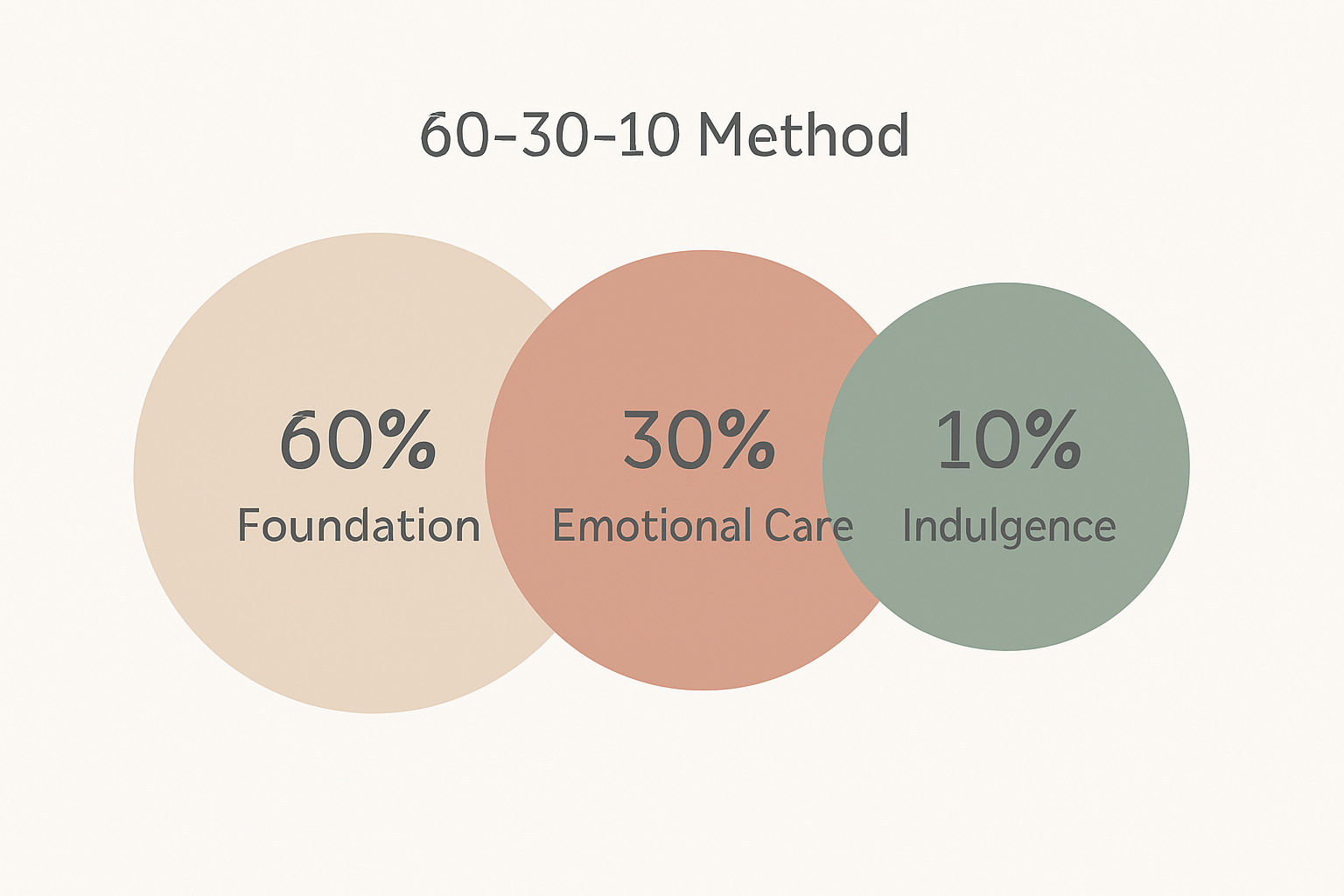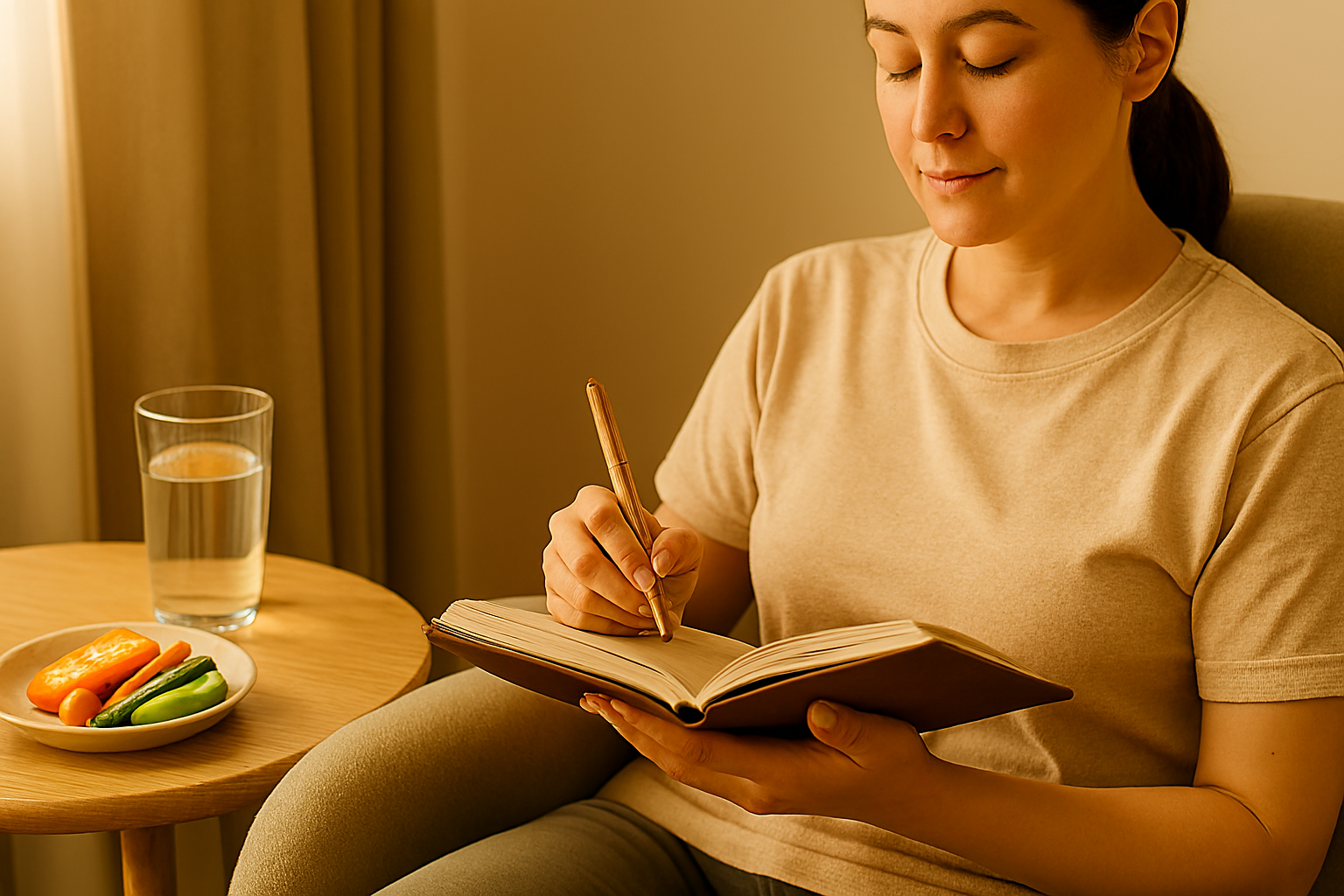60-30-10 Method: The Simple Framework for Balanced Self-Care That Actually Works

It is Wednesday evening. You have just canceled plans with friends for the third time this month because you are exhausted. Your meditation app notifications are piling up. The expensive jade roller you bought sits unopened. Despite your growing collection of self-care tools and good intentions, you feel more depleted than ever.

In our wellness-obsessed culture, we have accumulated endless strategies, yet burnout continues to rise. We follow influencers' routines and buy promising products, only to feel like we are failing at taking care of ourselves. What if self-care had a simple structure to keep it balanced and sustainable?
Enter the 60-30-10 Method, a straightforward framework that redistributes your self-care efforts to create genuine wellness instead of another overwhelming to-do list.
What Is the 60-30-10 Self-Care Method?
The 60-30-10 Method is a balanced approach that allocates your self-care attention and resources according to what truly impacts your health.
- 60% Foundational Health Habits: These are the non-negotiable basics that support your physical body. They include quality sleep, nourishing nutrition, regular movement, and preventative healthcare.
- 30% Emotional and Mental Care: This category addresses your psychological wellbeing. It includes practices like boundary setting, stress management, community connection, and professional support like therapy.
- 10% Indulgent or Luxury Self-Care: These are the "treats" we often mistake for primary self-care. They include spa treatments, beauty rituals, special purchases, and aesthetic wellness products.
The genius of this framework is its proportionality. Most wellness advice focuses on the luxurious 10% while neglecting the foundational 60% that actually determines how we feel day to day.
Why Most Self-Care Advice Falls Short
The modern self-care movement has been distorted by a few key factors:
- Commercialization: The multi-billion dollar wellness industry naturally emphasizes purchasable solutions (products) over free practices (processes).
- Visibility Bias: Instagram-worthy moments like bath bombs and matcha lattes get showcased, while the truly transformative work of setting boundaries or prioritizing sleep remains invisible.
- Symptom-Focused Fixes: When we are exhausted, we often reach for quick-fix indulgences rather than addressing the underlying patterns creating our depletion.

How to Apply the Method in Real Life
Implementing this balanced approach requires honest assessment and intentional planning.
Step 1: Audit Your Current Self-Care
Before making changes, track where your self-care energy currently goes for one week. Classify your activities into the three categories. You might discover a surprising imbalance.
Step 2: Identify and Correct Common Imbalances
Most people fall into one of these patterns. See if one resonates and use the suggestions to gently shift your focus.
- The Over-Indulger: Your focus is heavily on the 10%. You buy the fancy bath oils and book the massages but consistently get only five hours of sleep. Your shift: Focus on one foundational habit, like a consistent bedtime, for a week before your next indulgence.
- The Dutiful Grinder: You are stuck in the 60%, treating your body like a machine with perfect nutrition and exercise but ignoring your emotional needs. You feel healthy but hollow. Your shift: Schedule a 15-minute emotional check-in through journaling or a quiet walk without your phone.
- The Emotional Processor: You invest heavily in the 30% with therapy and journaling but neglect your physical foundation. You understand your stress but are too tired to do anything about it. Your shift: Prioritize one physical need. Maybe it is a protein-rich breakfast or a short, daily walk to support your body.
Step 3: Redistribute Your Attention
Once you know your pattern, you can take small steps to find balance.
- For the 60% Foundation: Add one sustainable nutrition upgrade, like protein at breakfast. Incorporate movement that supports you, like a lunchtime walk.
- For the 30% Emotional Care: Identify one boundary that needs strengthening. Connect meaningfully with someone who energizes you.
- For the 10% Indulgent Care: Choose treats mindfully. Fully enjoy them without guilt. Select care that genuinely rejuvenates, not just temporarily numbs.
Step 4: Practice Seasonal Flexibility
The 60-30-10 ratio remains constant, but the specific practices within each category should adapt to your life. During intense work periods, your 60% might focus more on sleep. During emotional challenges, your 30% might emphasize therapy. This flexibility prevents the framework from becoming another rigid standard.

The Power of a Balanced Self-Care Practice
When self-care is redistributed using this method, several transformations occur:
- Increased Energy: By prioritizing foundational health, your energy baseline naturally rises.
- Reduced Guilt: The framework legitimizes all three categories, eliminating the guilt often associated with both indulgences and basic needs.
- Greater Resilience: With solid foundations and addressed emotional needs, your capacity to handle life’s challenges increases significantly.
- Authentic Pleasure: The 10% indulgent category becomes more genuinely enjoyable when it is not carrying the burden of your entire self-care practice.
The 60-30-10 Method is not another trend to perfect. It is a return to holistic practice. By realigning your attention, you transform self-care from an occasional treat into a sustainable way of life. Begin by observing your current patterns with compassion, then make one small shift toward better balance this week.





